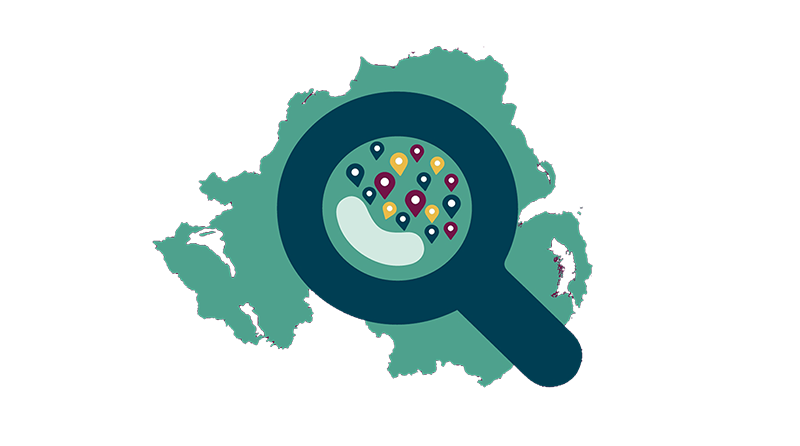Reviewed By Pamela Kirkpatrick - Senior Accredited NCPS & Registered Member MBACP Adv. Dip.
What are Somatic Exercises?
12 April 2024
Gain some insight into the realm of somatic practices. Simply put, somatic exercises use the profound connection between our body and our well-being.

Catherine Wells
Occupational Therapist
So, grab a cup of tea, find a comfy spot, and let Catherine explain in this video, or read on below.
Understanding Somatic Practices
First things first, what exactly are somatic practices?
The term "somatic" originates from the ancient Greek word "soma," meaning body. In essence, somatic exercises involve using our body to enhance our overall well-being. Somatic exercises operate on a bottom-up processing approach. We use our body to influence and improve our mind, emotions, and feelings in the present moment.
Bottom-Up Approach: Taking a Deep Breath
Taking a deep breath to calm down in a stressful situation is a bottom-up approach. By focusing on the physical sensation of the breath filling their lungs, they're calming their body directly, which can then help to relax their mind and reduce stress.
You may be familiar with mind-based practices such as CBT or talking therapies which can be really helpful and successful interventions. But these practices work in a top down approach, meaning that we use our mind to influence our body.
Top-Down Approach: Reading a Self-Help Book
When someone reads a self-help book to improve their mood, they're using their thoughts (top-down) to influence how they feel. For example, if they read about positive thinking, they might consciously try to think more positively throughout their day, which could lift their mood and improve their motivation.
The Body-Mind Connection
Our journey begins with a fascinating aspect of our anatomy—the vagus nerve.
This powerhouse, the second largest nerve in our body, plays a crucial role in our relaxation response. 20% of its fibres travel from the brain to the body, but a whopping 80% go from the body to the brain. Our body is a messenger, constantly communicating with our brain.
Somatic exercises allow us to tap into this communication system. By engaging in these techniques, we leverage hardwired mechanisms within us to regulate our nervous system and process emotions.
It's about bypassing rational thought and connecting with our ancient, primal brain. This can be super helpful for those of us who struggle to rationalise when we are in a dysregulated state. When overwhelming feelings come out of the blue, and no amount of rational thinking or top-down, practical approaches seem to work, you can see how bottom up approaches can be hugely beneficial.
The Benefits of Somatic Practices
The world we live in dysregulates our nervous system because we're essentially mammals. And of course, the world has shifted and changed way faster than our brains have.
This stress or dysregulation, if left unaddressed and prolonged, can manifest in both mental health and physical health issues such as:
- Chronic Stress and Anxiety: A dysregulated nervous system can lead to chronic stress and heightened anxiety levels, making it difficult to relax and cope with everyday challenges.
- Depression: Prolonged dysregulation can contribute to feelings of hopelessness, sadness, and depression, as the body's stress response continues to impact mood regulation.
- Post-Traumatic Stress Disorder (PTSD): Individuals with a history of trauma may be more susceptible to developing PTSD if their nervous system remains dysregulated, leading to intrusive thoughts, flashbacks, and emotional reactivity.
- Difficulty Concentrating and Memory Problems: A dysregulated nervous system can impair cognitive function, making it challenging to focus, concentrate, and remember information.
- Sleep Disturbances: Chronic stress and dysregulation can disrupt sleep patterns, leading to insomnia, frequent awakenings, and overall poor sleep quality.
- Cardiovascular Issues: Prolonged activation of the stress response can increase blood pressure, heart rate, and contribute to cardiovascular problems such as hypertension, heart disease, and stroke.
- Digestive Disorders: A dysregulated nervous system can negatively impact digestion, leading to issues such as irritable bowel syndrome (IBS), acid reflux, and gastrointestinal discomfort.
- Immune System Suppression: Chronic stress and dysregulation can weaken the immune system, making individuals more susceptible to infections, illness, and slower healing times.
- Musculoskeletal Pain: Persistent tension and muscle tightness resulting from a dysregulated nervous system can contribute to chronic pain conditions such as tension headaches, back pain, and muscle stiffness.
- Skin Problems: Stress-related hormones released during nervous system dysregulation can exacerbate skin conditions such as eczema, psoriasis, and acne.
Somatic practices are a holistic approach that helps to regulate our nervous system and, consequently, improve our overall health. But there's more...
Feeling your Feelings
These exercises also empower us to fully feel our emotions, a skill many of us unintentionally neglect.
A feeling typically lasts about 90 seconds; anything beyond that is often our mind fuelling those thoughts, ruminating, anxiously clinging to what if’s or being hard on ourselves. It's understandable that we'd do this, sometimes they're painful, sometimes they're hard, sometimes we just don't have the time to actually process these emotions. Maybe we distract ourselves, or are so practiced at avoiding feeling them that we don't quite know how to.
Somatic practices guide us to fully integrate our emotions. That means actually feeling how an emotion feels, feeling the physical sensations associated with it, allowing them to arise and pass in the way they're meant to. Not only does this help with processing past emotions, it also empowers us to tackle anything the future may throw at us.
Sensory Integration
Somatic exercises extend their benefits to sensory integration—a process where we use our body's senses to regulate our nervous system. Whether we need to feel safe, relax for sleep or focus on a task, there are somatic techniques for that! more control over ourselves.
Your Somatic Journey
Many of us are hyper vigilant, maybe even fearful of our emotions, or the sensations associated with our feelings. Maybe that's because of past experiences, or just the fast paced world we live in. Your nervous system deserves needs a reminder that you are safe, so you can connect with other people more deeply, so you can sleep, so you can digest and so your body & mind can heal.
We plan to add somatic exercises to the blog soon. So that you can try out some somatic exercises and embed these practices into your everyday life. Nothing can eliminate all the stress from your life, but getting comfortable with somatic exercises can equip you with a powerful tool, your own body!
Get Inspired Further
why you should try breathwork
Breathwork practices can have a profound effect on our mental, physical and emotional wellbeing.
Candle Meditation
Experts and some research suggest that candle gazing meditation can help enhance cognitive function, mental health, and reduce anxiety.
Meditation 6 Barriers for Newbies
Knowing the hurdles you might face as a beginner can really help. Plus we've a bonus, easy-peasy meditation for you to try that won't take up any of your time.



